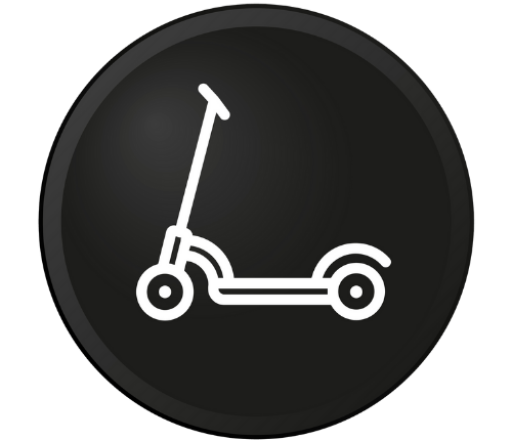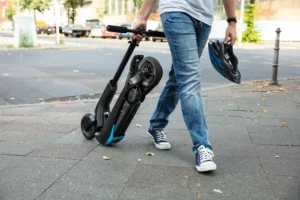In the ever-evolving landscape of personal transportation, self-balancing scooters have emerged as a futuristic and stylish mode of commuting.
Known for their innovative design and intuitive functionality, these scooters have gained popularity worldwide, offering riders a unique and thrilling way to navigate urban environments.
In this article, we explore the evolution, features, and the irresistible appeal of self-balancing scooters.
The Evolution of Self-Balancing Technology
The concept of self-balancing technology in scooters traces its roots to innovations in the field of robotics and automation.
By integrating gyroscopic sensors and accelerometers, engineers were able to create a dynamic system that responds to the rider’s body movements, allowing for seamless balance control.
This breakthrough paved the way for the development of self-balancing scooters, ushering in a new era of personal electric transportation.
Intuitive Riding Experience
What sets self-balancing scooters apart is their intuitive riding experience. Riders control the scooter’s movements by shifting their weight forward, backward, or sideways, prompting the onboard sensors to adjust the balance accordingly.
This intuitive nature makes self-balancing scooters accessible to riders of various skill levels, providing a learning curve that is both quick and enjoyable.
Effortless Maneuvering Through Urban Terrain
Navigating busy city streets or crowded sidewalks becomes a breeze with self-balancing scooters.
Their compact design and agility allow riders to effortlessly weave through traffic, making them an ideal solution for urban commuters.
The scooters’ responsiveness to subtle body movements enables precise control, offering a smooth and efficient way to cover short distances.
Electric-Powered Efficiency
Most self-balancing scooters are powered by electric motors, providing a clean and eco-friendly mode of transportation.
The electric propulsion not only contributes to reduced environmental impact but also ensures a quiet and efficient ride.
As cities emphasize sustainable transportation, self-balancing scooters align perfectly with the growing demand for electric-powered mobility solutions.
Versatility and Portability
The versatility of self-balancing scooters extends to their portability. With a lightweight and compact design, these scooters are easily carried when not in use.
Their convenient size allows riders to seamlessly integrate them into various parts of their daily routine, whether it’s commuting to work, running errands, or exploring the city.
Smart Connectivity and Safety Features
As technology continues to advance, self-balancing scooters are integrating smart features for an enhanced riding experience.
Many models come equipped with Bluetooth connectivity, enabling riders to control settings, track mileage, and receive real-time data through dedicated smartphone apps.
Additionally, safety features such as LED lights, responsive braking systems, and anti-slip foot pads contribute to a secure and enjoyable ride.
Challenges and Future Innovations
While self-balancing scooters have garnered widespread acclaim, challenges such as regulatory frameworks and public perception need to be addressed.
Continued innovation in battery technology, improved range, and enhanced safety features are key areas of focus for manufacturers.
The future holds exciting possibilities for self-balancing scooters, with advancements expected to further refine their design, efficiency, and integration into urban transportation systems.
Conclusion
Self-balancing scooters represent more than just a mode of transportation; they embody a fusion of technology and practicality, offering riders an exhilarating and efficient way to move through their daily lives.
As these scooters continue to evolve and become increasingly integrated into urban landscapes, they symbolize a dynamic shift towards innovative and sustainable personal mobility solutions.
Whether for commuting, recreation, or simply exploring the city, self-balancing scooters have carved out a unique niche in the world of modern transportation.



